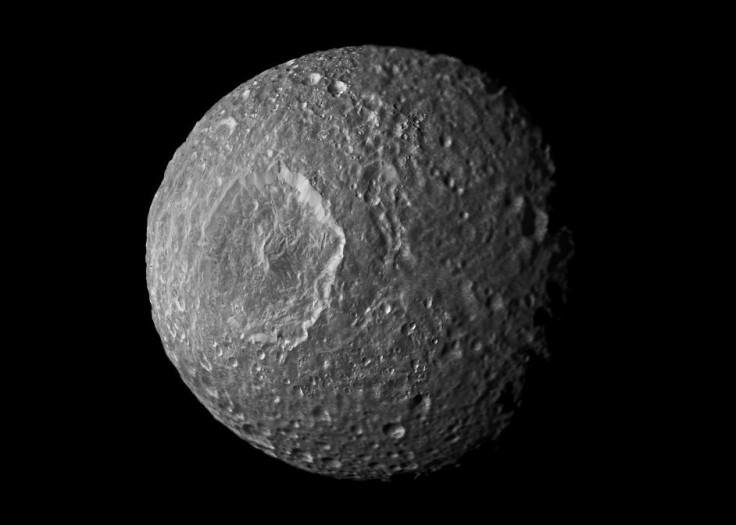Saturn’s Icy Moon Mimas May Contain Ocean That Could Provide ‘Life-Friendly’ Environments

Mimas, one of Saturn’s major moons, could contain a liquid water ocean miles under its icy surface, raising the possibility of another celestial body in our solar system that could support life, according to a new study, published in the journal Science on Friday.
The possibility of an underground ocean is one of two intriguing explanations for why Mimas wobbles while orbiting Saturn. The other explanation is that the cold moon could have a frozen core, which is shaped something like a football, the researchers said, based on images of Mimas taken by NASA's Cassini spacecraft.
“If Mimas does have an ocean, this would definitely be another interesting body in the solar system to be added to list of potential ‘life-friendly’ environments,” Radwan Tajeddine of Cornell University in Ithaca, New York, and the study’s lead author, told Reuters.
The presence of an ocean would help Mimas join a club of “ocean worlds,” which includes several moons of Jupiter and two other Saturn moons, Enceladus and Titan, the researchers said, adding that an ocean would be surprising as the cratered surface of Mimas does not display signs of geologic activity.
According to the study, Mimas could be hiding a liquid water ocean about 15 miles to 20 miles beneath the moon's battered surface. Mimas, which is only 246 miles wide, is too small to have retained internal heat from its formation over four billion years ago, leading scientists to believe it would require some other source of energy to host an underground ocean.
However, if the other possibility of an oblong core turns out to be accurate, it would represent a record of Mimas’ formation, frozen in time, the researchers said.
Mimas' orbit is very slightly stretched out, shaped like an ellipse rather than a perfect circle, causing the point on the moon’s surface that faces Saturn to vary slightly over the course of an orbit. Astronomers call this effect 'libration,' which is also seen on Earth's moon.
“Observing libration can provide useful insights about what is going on inside a body,” Tajeddine said in a statement. “In this case, it is telling us that this cratered little moon may be more complex than we thought.”
© Copyright IBTimes 2024. All rights reserved.












